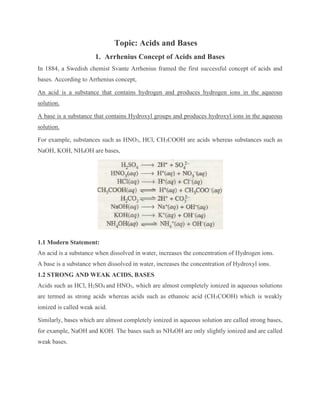The document discusses different concepts of acids and bases including:
1. Arrhenius concept which defines acids as substances that produce H+ ions in water and bases as substances that produce OH- ions.
2. Bronsted-Lowry concept which defines acids as proton donors and bases as proton acceptors.
3. Lewis concept which defines acids as electron pair acceptors and bases as electron pair donors and can explain acid-base reactions not involving proton transfer.
Hydrogen bonding is also discussed as the electrostatic attraction between hydrogen atoms covalently bonded to electronegative atoms. Hydrogen bonding influences properties like melting/boiling points and aggregation of molecules.










